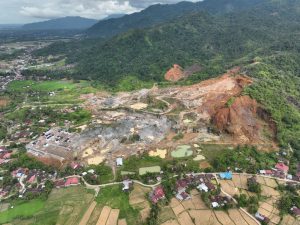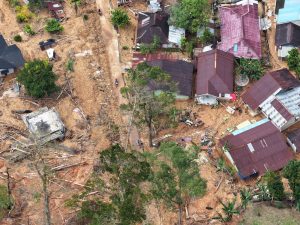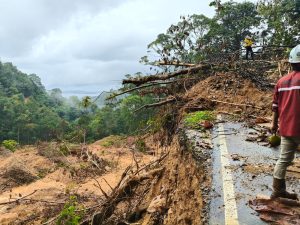Jakarta – The government says that the funds needed to reduce greenhouse gas emissions will reach nearly Rp4,000 trillion by the end of this decade. At the same time, the state and regional budgets can only cover less than 20 per cent of that amount. A huge funding gap still hampers Indonesia’s path toward its 2030 climate targets.
“Based on the third general update report in 2021, the requirement for emission reduction in accordance with our NDC (Nationally Determined Contribution) is around USD 280 million, or nearly Rp4,000 trillion, until 2030. From the state and regional budgets, only 18 per cent can be financed. This means that more than 80 per cent must be covered by other sources,” said Deputy for Climate Change Control and Carbon Economy Governance at the National Agency for Climate Change (BPLH), Ary Sudijanto, during an online workshop on strengthening the carbon trading ecosystem on Friday, August 22.
To bridge this significant gap, the government is placing its hopes on carbon-based financing mechanisms. One such mechanism is the results-based payment (RBP) scheme, from which Indonesia has already reaped direct benefits. Norway’s USD 156 million in support for emissions reductions during the 2014–2016 period is proof that this scheme is working.
On the other hand, domestic carbon trading has also begun to grow. Ary said that the government has issued more than six million emission reduction certificates. Of that number, 3 million certificates are available on the carbon market, with 1.6 million already sold.
“The value is approximately Rp78 billion. This is a good start for building a domestic carbon trading ecosystem,” he explained.
Indonesia is also preparing a voluntary carbon market through international cooperation based on a Mutual Recognition Agreement (MRA). Although not yet an official part of the Paris Agreement, this mechanism has potential because it dominates 90 per cent of the global carbon market.
Ary emphasised that the carbon financing scheme is not an instrument for seeking fiscal gains. “The goal is not to make Indonesia rich. The main goal is to ensure that climate projects that are often economically unviable, such as renewable energy and waste management, can still be implemented,” he said.
As we move toward 2030, when all countries are required to demonstrate their NDC achievements, the government is strengthening governance through the development of a National Registry System (SRN). A trial run of this system is scheduled for the end of August 2025.
With a combination of international funding, domestic carbon markets, and strengthened regulations, Indonesia hopes to close the trillion-rupiah gap and keep its promise to reduce emissions by 31.89 per cent through its own efforts, or up to 43.2 per cent with global support. (Hartatik)
Banner photo: Image generated by OpenAI’s DALL·E via ChatGPT (2024)















